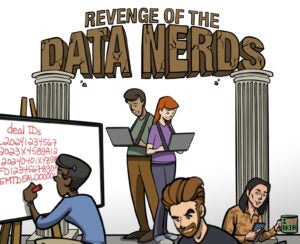 “Data-Driven Thinking” is written by members of the media community and contains fresh ideas on the digital revolution in media.
“Data-Driven Thinking” is written by members of the media community and contains fresh ideas on the digital revolution in media.
Today’s column is written by Victor Davidson, US lead at DBi Consulting.
Marketing orchestration is a strategy or platform that enables marketers to control consumer touch points across paid and owned channels.
As I wrote in a previous column, there is a lot of misinformation surrounding marketing orchestration. I don’t believe we’ll see orchestration become a reality in the near future, so marketers should focus on what’s realistic today.
Instead of thinking about orchestrating a perfect journey of brand interactions, marketers should concentrate on better coordinating their activities across the broader ecosystem. This approach, marketing coordination, is defined as better alignment, through technology, of existing marketing resources. It is the first step in breaking down the organizational silos between paid and owned communications – both on the brand and agency sides.
There are three key aspects to a marketing coordination framework: organizational communication, technology investment and holistic measurement.
Organizational Communication
Many marketing organizations are structured in such a way that loyalty and CRM marketing is done independently from paid media. This can cause a jarring experience for customers when they receive email or direct mail communications that are disconnected from the way a brand is talking to them in social or on TV.
One way to mitigate this is through better organizational communication. I’ve found that the most important part of strengthening organizational communication is a quarterly road map session to align coordination across four key stakeholder groups: CRM/loyalty, media planning/strategy, digital (website/app) and analytics.
Quarterly planning sessions ensure that media activation teams who manage the data management platform (DMP) are executing their strategies in alignment with loyalty email programs. And the sessions will also ensure that onsite development and testing is supporting both groups.
On a more frequent and tactical basis, if marketers are not coordinating paid search, display, social and email testing, there’s probably room for improvement.
AdExchanger Daily
Get our editors’ roundup delivered to your inbox every weekday.
Daily Roundup
Technology Investment
Marketers spending more than $20 million in digital media should think about investing in a DMP as a complement to their CRM. And if email marketing is still being run exclusively by an IT team because it requires complicated structured query language to execute, they should consider also investing more in technology.
This can be easier said than done. I know many marketers who would love to invest in more technology, but are consistently blocked by finance teams. Often, this is a result of making an investment request without a full business case. Building a comprehensive technology road map with quantifiable ROI is a necessary step in the process.
A move to marketing coordination requires systems that are mature enough to connect with the ecosystem as it exists today, but also flexible enough to fit into what comes next.
Holistic Measurement Framework
The best way to start on the path of marketing coordination is to spend the time to develop a holistic measurement framework. The challenge for most marketers is building the necessary linkage from business metrics like revenue or profit, to media metrics, such as cost per order, and then selecting a KPI.
Each organization is different, but if marketers think of their media investment in terms of a marketing funnel, what is their upper-funnel KPI versus their lower-funnel KPI? Where does email fit in? Is it always a pure retention technique? If not, do they adjust the measurement to fit its purpose? Are they using a multitouch form of attribution that accounts for as many of a consumer’s touch points as possible? If their email team is measuring their effectiveness in Exact Target but their paid media is being measured via DCM, they have a problem.
Avoiding Wasted Time And Resources
The distinction between coordination and orchestration is important because marketers risk conflating the presence of a DMP with having true orchestrated marketing. Marketing coordination reorganizes the available pieces of a marketer’s technology ensemble to better address the realities of their consumers.
People don’t see themselves as being in a funnel; their media consumption certainly doesn’t follow a uniform pattern. As a result, the marketing function in an organization needs to be dynamic, yet holistically designed around multichannel access points.
I remember talking to a travel client back in 2013 when his company first deployed a DMP. The company was an early adopter in the space and the marketing client was struggling with the amount of work his team was going to absorb because of this new technology. He was excited at the prospect of better harnessing his company’s data, but he spent the next 12 months feeling like his team (and his agency) were playing catch-up.
In this case, the DMP selection and deployment were done by the analytics department and the marketing team was just expected to make use of the new tool. This scenario is probably familiar to many marketers and represents a serious threat as the industry continues to evolve. Starting down the path of marketing coordination is the first step in ensuring an organization doesn’t waste precious time and resources.
Follow Victor Davidson (@vicyogi), Havas Media (@HavasMedia), Havas Group (@HavasGroup) and AdExchanger (@adexchanger) on Twitter.












